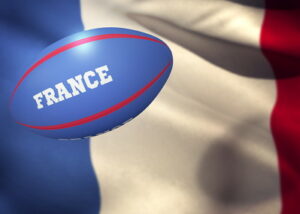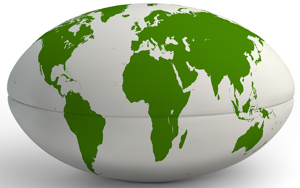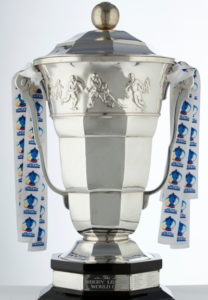Rugby League World Cup 2025 Betting Offers – France
 Mention the words ‘World Cup’ to people and the event that they think of will depend entirely on which sport they enjoy the most. Football supporters will think of moments featuring Ronaldo, Pele or Geoff Hurst, whilst cricket lovers will remember Viv Richards putting England to the sword or South Africa throwing it all away in 1999. Rugby fans, on the other hand, will look towards countless moments over the years from their own World Cup.
Mention the words ‘World Cup’ to people and the event that they think of will depend entirely on which sport they enjoy the most. Football supporters will think of moments featuring Ronaldo, Pele or Geoff Hurst, whilst cricket lovers will remember Viv Richards putting England to the sword or South Africa throwing it all away in 1999. Rugby fans, on the other hand, will look towards countless moments over the years from their own World Cup.
Contested by teams that are part of the Rugby League International Federation, the Rugby World Cup was inaugurated in 1954 in France. It sees the best national teams from around the world gather together and go up against each other for the right to be crowned world champions.
Since the turn of the millennium there have also been World Cups in rugby for students, women and other categories. The interval between tournaments varies, sometimes being 2 years and sometimes 8. Since 2013 the tournament has been held every 4 years.
The 2025 edition of the WC, the 17th edition, is held France and sees 16 teams compete in a group phase followed by a knockout stage that starts with the quarter-finals. Rugby League isn’t a sport that attracts a lot of bookies offers, but the World Cup is different, we’ve done the hardwork so you don’t have to and have collated the best deals from UK betting sites below. Further down find event information, history, trivia and more.
Rugby League World Cup Betting Offers for 2025
This event has not started yet, please check back nearer the time. For other offers see our main loyalty page.
World Cup Draw
| Pool | Group A | Group B | Group C | Group D |
|---|---|---|---|---|
| Seeded | England | Australia | New Zealand | Tonga |
| Pool 1 | Samoa | Figi | Lebanon | Papua New Guinea |
| Pool 2 | France | Scotland | Jamaica | Wales |
| Pool 3 | Greece | Italy | Ireland | Cook Islands |
In January 2020 the draw for the World Cup was made at Buckingham Palace, in fact this was Prince Harry’s last official royal duty. The 8 quarter finalists at the 2017 world cup qualify automatically.
The eight other teams were defined by the end of 2019 through continental and intercontinental play-offs. The opening ceremony will take place at St James’ Park in 2022.
Quarter Finals
| Fixture | Date | Time (UK) | Stadium |
|---|---|---|---|
| Australia v Lebanon | 4th November | 19:30 | Kirklees Stadium (Huddersfield) |
| England v Papua New Guinea | 5th November | 14:30 | DW Stadium (Wigan) |
| New Zealand v Figi | 5th November | 19:30 | MKM Stadium (Hull) |
| Tonga v Samoa | 6th November | 14:30 | Halliwell Jones Stadium (Warrington) |
Semi Finals
| Fixture | Date | Time (UK) | Stadium |
|---|---|---|---|
| Australia v New Zealand | 11th November | 19:45 | Elland Road (Leeds) |
| England v Samoa | 12th November | 14:30 | The Emirates (London) |
World Cup 2022 Final
| Fixture | Date | Time (UK) | Stadium |
|---|---|---|---|
| Australia v Samoa | 19th November | 16:00 | Old Trafford (Manchester) |
World Cup Format
 As you will no doubt have picked up, the Rugby League World Cup’s format has changed almost every time that the competition has taken place. The organisers have struggled to settle on a format that is seen as a winning one, resulting in occasional confusion over how exactly things will work.
As you will no doubt have picked up, the Rugby League World Cup’s format has changed almost every time that the competition has taken place. The organisers have struggled to settle on a format that is seen as a winning one, resulting in occasional confusion over how exactly things will work.
With that in mind, the best thing to do is to look at the 2022 World Cup as the example of how the tournament works. It sees the eight quarter-finalists from the 2017 World Cup qualify automatically, with the other eight nations decided by a qualification tournament.
A decision was taken that the tournament would be made up with teams from each of the following jurisdictions:
- 7 from Europe (including hosts England)
- 6 from Asia-Pacific
- 1 from Middle East/Africa
- 1 from the Americas
- 1 from an intercontinental play-off
As with previous World Cups, the tournament involves a group stage with four teams in four different groups. The top two teams in each group at the end of the group stage matches move through to the knockout stage.
The quarter-finals involve the eight teams that qualified from the groups going up against each other in one-off matches. The four winners move into the semi-finals, with the two winners of those matches qualifying for the final.
The final match will see the best two teams that have made it through both the groups and the knockout stage go head-to-head to decide upon the overall winner and therefore the world champions.
World Cup Venues
| Stadium | Opened | Capacity | City |
|---|---|---|---|
| Old Trafford (Final Venue) | 1910 | 74,994 | Manchester |
| Emirates Stadium | 2006 | 60,260 | London |
| DW Stadium | 1999 | 25,138 | Wigan |
| St James’ Park | 1892 | 52,405 | Newcastle |
| Elland Road | 1897 | 37,890 | Leeds |
| Riverside Stadium | 1995 | 34,742 | Middlesbrough |
| Bramall Lane | 1855 | 32,702 | Sheffield |
| Coventry Arena | 2005 | 32,609 | Coventry |
| University of Bolton Stadium | 1997 | 28,723 | Bolton |
| MKM Stadium | 2002 | 25,586 | Hull |
| Kirklees Stadium | 1994 | 24,500 | Huddersfield |
| Headingley Stadium | 1890 | 21,062 | Leeds |
| Totally Wicked Stadium | 2011 | 18,000 | St Helens |
| Keepmoat Stadium | 2007 | 15,231 | Doncaster |
| Halliwell Jones Stadium | 2004 | 15,200 | Warrington |
| Leigh Sports Village | 2008 | 12,000 | Leigh |
| Kingston Park | 1990 | 10,200 | Newcastle |
| York Community Stadium | 2020 | 8,005 | York |
At the time of writing, 81 different venues have been used to host Rugby League World Cup matches. In essence the venues that are used to host matches have to be large enough to cope with the crowds that will attend, as well as a decent infrastructure to be able to transport people to and from the stadiums.
Noteworthy grounds that have hosted Rugby League World Cup matches include the following:
- Parc des Princes (Paris)
- Sydney Cricket Ground (Sydney)
- Headingley (Leeds)
- Eden Park (Auckland)
- Old Wembley Stadium (London)
- Old Trafford (Manchester)
- Lang Park (Brisbane)
- Lloyd Robson Oval (Port Moresby)
- Wembley Stadium (London)
History of the Rugby Union World Cup
 The French had been campaigning for a World Cup format to be put in place since about 1935, but it wasn’t really taken seriously until raised by the President of the French Rugby League, Paul Barrière, in 1951. The following year it was supported by the Secretary of the Rugby Football League, Bill Fallowfield. He managed to persuade the Rugby League Council that it was a good idea and when the International Board met in Blackpool the following year Paul Barrière’s suggestion that the French should host the inaugural tournament in 1954 was accepted.
The French had been campaigning for a World Cup format to be put in place since about 1935, but it wasn’t really taken seriously until raised by the President of the French Rugby League, Paul Barrière, in 1951. The following year it was supported by the Secretary of the Rugby Football League, Bill Fallowfield. He managed to persuade the Rugby League Council that it was a good idea and when the International Board met in Blackpool the following year Paul Barrière’s suggestion that the French should host the inaugural tournament in 1954 was accepted.
The first ever iteration of the competition saw France go up against Great Britain, Australia and New Zealand, with the two European teams reaching the final. It was Great Britain that ultimately triumphed, defeating the home nation in Paris on the 13th of November to be crowned the first ever world champions. It was seen as a resounding success and the four Test nations continued to compete against each other in a league format. In 1954 the top two at the end of the league had competed in a final, but this was changed for the second World Cup in 1957 and Australia, who finished top of the league, were declared champions.
Tournament Gets A Radical Overhaul
![]() Not much changed in the years that followed, with the exception of the fact that it took an eight year hiatus between 1960 and 1968 because France, who were supposed to host it in 1965, withdrew after a poor showing during a tour of Australia. When it resumed it continued on a two-year cycle, with the 1972 final witnessing the first black player in Clive Sullivan to captain any of the British national sports teams. Yet the biggest change to the Rugby League World Cup since its inception occurred in 1975 when it was completely overhauled in a rather radical fashion.
Not much changed in the years that followed, with the exception of the fact that it took an eight year hiatus between 1960 and 1968 because France, who were supposed to host it in 1965, withdrew after a poor showing during a tour of Australia. When it resumed it continued on a two-year cycle, with the 1972 final witnessing the first black player in Clive Sullivan to captain any of the British national sports teams. Yet the biggest change to the Rugby League World Cup since its inception occurred in 1975 when it was completely overhauled in a rather radical fashion.
Rather than having one host nation, as had been the case in all previous iterations, the decision was taken to host matches on a home and away basis for teams around the world. Not only that but Great Britain was to be split into England and Wales, which allowed the number of participants to increase from four to five. That year there was no final, so Australia were declared champions when they finished top of the group. The only problem was that they had not beaten England during the tournament, so a challenge match was arranged that the Aussies won 25-0.
People Lose Interest
 In 1977 the decision was taken to reunite Wales and England into a Great Britain team, which then reached the final against Australia. Despite it being quite a thrilling match, the public had begun to lose interest in the World Cup because the tournament had been tinkered with so much. Indeed, such was the lack of interest that the competition had a hiatus until 1985. When it resumed it took place over three years, with matches that were part of other tours considered to be part of the World Cup.
In 1977 the decision was taken to reunite Wales and England into a Great Britain team, which then reached the final against Australia. Despite it being quite a thrilling match, the public had begun to lose interest in the World Cup because the tournament had been tinkered with so much. Indeed, such was the lack of interest that the competition had a hiatus until 1985. When it resumed it took place over three years, with matches that were part of other tours considered to be part of the World Cup.
That format was then used again between 1989 and 1992, seeing Australia win it for the second time in a row. Despite the general apathy towards the tournament, the crowd that witnessed the Kangaroos defeat Great Britain 10-6 at Wembley Stadium was a record figure, topping out at 73,361. That record stood for more than twenty years until 74,468 people turned up to Old Trafford in 2013. The lack of interest in the tournament as a whole led to another re-think ahead of the next World Cup in 1995.
The Tournament Expands
 One of the main ways that it was decided that the World Cup could garner more interest was by expanding and restructuring it. It moved from a 5 team tournament to one in which 10 teams would enter, along with a return to the host nation format that had been used when it was first created. It was re-jigged by adding a knockout stage, which featured both a quarter-final and a semi-final stage before the two best teams played each other in the final.
One of the main ways that it was decided that the World Cup could garner more interest was by expanding and restructuring it. It moved from a 5 team tournament to one in which 10 teams would enter, along with a return to the host nation format that had been used when it was first created. It was re-jigged by adding a knockout stage, which featured both a quarter-final and a semi-final stage before the two best teams played each other in the final.
The tournament in 1995 was marred slightly by the Super League War in Australia and New Zealand during which the Australian Rugby League (ARL) and the Australian Super League wrestled for control of the top-level of rugby league in the antipodean nations. The result was that players that had sided with ASL were not selected to represent Australia. Even so, it proved to be extremely popular and more than a quarter of a million people attended the group stage matches.
Competition Is Put On Hiatus
 At the turn of the millennium the tournament was once again expanded, resulting in 16 teams entering it. One of the teams was a New Zealand Maori side, which was the only time that they have taken part. Poor organisation, blown-out scores and a lack of excitement led to yet another feeling of apathy from the public. The result was that the World Cup was put on hiatus for an indefinite period of time, though the Women’s Rugby League World Cup was inaugurated in 2000 and took place again in 2005.
At the turn of the millennium the tournament was once again expanded, resulting in 16 teams entering it. One of the teams was a New Zealand Maori side, which was the only time that they have taken part. Poor organisation, blown-out scores and a lack of excitement led to yet another feeling of apathy from the public. The result was that the World Cup was put on hiatus for an indefinite period of time, though the Women’s Rugby League World Cup was inaugurated in 2000 and took place again in 2005.
The men’s version of the tournament didn’t return until 2008, with the format having returned to a 10 team format. Australia were the hosts and once again reached the final, but they were defeated by New Zealand and the Kiwis won the tournament for the first time. The long absence of the competition perhaps made rugby fans miss it, the result of which was that fans returned to watch the matches and there was an average attendance of 91% more than at the previous tournament.
Modern Tournament Takes Shape

For the 2013 tournament England and Wales acted as joint hosts and the competition was expanded to include 14 teams. It was the year that the record attendance to date for a final was set, with Australia beating New Zealand 34-2. On financial, attendance and exposure scale it was considered to be the most successful World Cup to date, with a decision being taken after its conclusion to schedule the World Cup every four years. The 2017 tournament took place in Australia, New Zealand and Papua New Guinea, with the latter bering hosts for the first time.
Part of the reason for the success of the 2017 World Cup came in the fact that the big teams didn’t have it all their own way. New Zealand were defeated by Tonga in the group stage before eventually being knocked out by Fiji in the quarter-finals. When England played Tonga in their semi-final they had to cling on to win 20-18, eventually losing to Australia in the final. The result of the success was a decision to make the 2022 World Cup one that will include 16 teams once again.
The 2022 WC went pretty much as you might expect. Being held in England there were high hopes for the men’s team, to win for the first time (only Great Britain have ever won the tournament). England beat Samoa 60-6 in the group phase but just one month later they lost to the same team by one point (27-26) in the semi-finals. Samoa took on the Aussies in the final and the Aussies prevailed again, winning 30-10 to take their 12 title out of 16 tournaments to date.
The Festival Of Cups
 The 2021 tournament saw the men’s tournament run in parallel with the women’s and wheelchair rugby league World Cups. This proved to be a huge success so for 2025 the whole event was rebranded to the ‘Festival Of Cups’ to showcase that the event is about more than just the men’s trophy.
The 2021 tournament saw the men’s tournament run in parallel with the women’s and wheelchair rugby league World Cups. This proved to be a huge success so for 2025 the whole event was rebranded to the ‘Festival Of Cups’ to showcase that the event is about more than just the men’s trophy.
In France in 2025 there will be a men’s, women’s, wheelchair and youth tournaments all under the umbrella. There are 40 cities needed to host all of these events and this spreads rugby league to every region in France.
With 64 teams and 128 matches to be played the World Cup has genuinely turned into a Festival. Small municipalities host the teams with most matches taking place in medium sized stadiums. The big matches including the semis and finals will be played in large stadiums in the likes of Paris, Lyon and Marseilles.
The only negative of this expanded system it is now limits the countries that can host the event given it’s size. How this will play out is yet to be seen but it is hoped it will help grow rugby league at all levels.
The Paul Barrière Trophy
 Commissioned by the President of French Fédération Française de Rugby à XIII, Paul Barrière, the Rugby League World Cup trophy cost 8 million francs. It was donated to the International Rugby League Board ahead of the inaugural World Cup in 1954 so that it might be presented to the winners of the competition.
Commissioned by the President of French Fédération Française de Rugby à XIII, Paul Barrière, the Rugby League World Cup trophy cost 8 million francs. It was donated to the International Rugby League Board ahead of the inaugural World Cup in 1954 so that it might be presented to the winners of the competition.
Named the Paul Barrière Trophy in honour of him, it was presented to the winners of the first four iterations of the Rugby League World Cup but was stolen in 1970. It was stolen just days before the final itself, meaning that no trophy could be presented to the winners that year. Between 1972 and 1995 a number of different trophies were presented, including one that Tiffany’s were commissioned to create for £10,000 in order to celebrate the centenary of the game of rugby in 1995.
In 1990 Bradford residents Stephen and Elizabeth Uttley discovered the original trophy in a ditch close to the Bradford and Bingley Rugby Club. He didn’t immediately recognise it and enquiries with local clubs bore no fruit. As a result he turned it in to the police, but it was returned to him 28 days later when it went unclaimed. Eventually he gave it to his friend who ran the White Rose Health Club in Bradford. It was only when rugby league historian Trevor Delaney saw a photo of it in a newspaper that the trophy was recognised.
It was brought back into use ahead of the 2000 World Cup and has been used in the tournaments ever since. It features four levels, based on top of a plinth. There is a top on the cup and two handles, both of which are usually adorned with the colours of the winning team when the trophy is presented.
Stats and Records
 There are countless records to tell you about when it comes to the Rugby League World Cup. Starting with just the stadiums used, no venue has hosted the competition more times than Headingley in Leeds. At the time of writing it has been responsible for hosting seven different Word Cups. The year 2000 saw the most stadiums used when 26 were used for the World Cup.
There are countless records to tell you about when it comes to the Rugby League World Cup. Starting with just the stadiums used, no venue has hosted the competition more times than Headingley in Leeds. At the time of writing it has been responsible for hosting seven different Word Cups. The year 2000 saw the most stadiums used when 26 were used for the World Cup.
The largest stadium that has hosted a World Cup match is Wembley, which has room for 90,000 supporters. The smallest is The Gnoll in Wales. It has a capacity of just 5,000 and hosted a game between Wales and the Cook Islands in 2013. Remarkably, that wasn’t actually the lowest attended match in World Cup history. Instead that honour goes to Stradey Park, also in Wales, that welcomed just shy of 2,000 people through its doors when it hosted a match between Wales and Lebanon during the 2000 World Cup.
When it comes to the nation that has been crowned champion the most, Australia is well out in front. They have finished as the winners on 12 different occasions, having been runners-up a further 3 times. Great Britain and New Zealand are the only other nations to have won the World Cup at the time of writing. Great Britain are also what you might call the ‘unluckiest’ team, having appeared in the final as losers 4 times. England can challenge that title, however, having appeared in 3 finals without winning one at the time of writing.
The best year for average attendance was 1957, when an average of 35,820 people turned up to watch the 6 matches that were played. That gave a total attendance of 214,918, which is dwarfed by the 2013 overall attendance figure of 458,483. 2017 should, perhaps, have had the best attendance on account of the fact that there was enough room in the stadiums used for 750,700 people.
Previous Rugby World Cup Winners
| Year | Winner | Runner Up | Result | Host |
|---|---|---|---|---|
| 2025 | ? | ? | ? | France |
| 2022 | Australia | Samoa | 30-10 | England |
| 2017 | Australia | England | 6-0 | Australia, New Zealand & Papua New Guinea |
| 2013 | Australia | New Zealand | 34-2 | England & Wales |
| 2008 | New Zealand | Australia | 34-20 | Australia |
| 2000 | Australia | New Zealand | 40-12 | UK, France & Ireland |
| 1995 | Australia | England | 16-8 | England & Wales |
| 1989-92 | Australia | Great Britain | 10-6 | International |
| 1985-88 | Australia | New Zealand | 25-12 | International |
| 1977 | Australia | Great Britain | 13-12 | Australia & New Zealand |
| 1975 | Australia | England | Won League | International |
| 1972 | Great Britain | Australia | 10-10# | France |
| 1970 | Australia | Great Britain | 12-7 | England |
| 1968 | Australia | France | 20-2 | Australia & New Zealand |
| 1960 | Great Britain | Australia | Won League | England |
| 1957 | Australia | Great Britain | Won League | Australia |
| 1954 | Great Britain | France | 16-12 | France |
Team Statistics
| Statistic | Team | Number | Year(s) |
|---|---|---|---|
| Most Titles | Australia | 12 | 1957, 1968, 1970, 1975, 1977, 1985-88, 1989-92, 1995, 2000, 2013, 2017, 2021 |
| Most Appearances | Australia & France | 16 | 1954-2021 |
| Most Wins | Australia | 71 | 1954 – 2021 |
| Most Loses | France | 44 | 1954-2021 |
| Most Matches | Australia | 83 | 1954 – 2021 |
| Highest Points (Overall) | Australia | 2756 | 1954 – 2021 |
| Highest Points (Match) | Australia | 114 (110-4) | 2000 vs Russia |
| Points Conceded (Overall) | France | 1595 | 1954 – 2021 |
| Best Points Difference (Overall) | Australia | +1998 | 1954 – 2021 |
| Worst Points Difference (Overall) | France | -916 | 1954 – 2021 |
| Biggest Wining Margin | Australia | 106 (110-4) | 2000 vs Russia |
| Title Win Percentage | Australia | 75% | 1954-2021 |
| Lowest Win Percentage | Russia & South Africa | 0% | 2000 & 1995-2000 |
Player Statistics
| Statistic | Player | Number | Year |
|---|---|---|---|
| Most Appearances | Kurt Sorensen (New Zealand) | 25 | 1975-1989 |
| Most Points (Overall) | Jonathan Thurston (Australia) | 124 | 2008-2017 |
| Most Tries (Overall) | Billy Slater | 16 | 2008-2017 |
| Tries (Tournament) | Valentine Holmes & Josh Addo-Carr | 12 | 2017 & 2021 |
| Tries (Match) | Valentine Holmes | 6 | 2017 |
Tournament Statistics
| Statistic | Location | Number | Year |
|---|---|---|---|
| Highest Attendance Match | Old Trafford (England) | 74,468 | 2013 |
| Highest Attendance Final | Old Trafford (England) | 74,468 | 2013 |
| Highest Attendance Tournament | England & Wales | 458,483 | 2013 |
| Lowest Attendance Tournament | Australia & New Zealand | 62,456 | 1968 |
| Highest Attendance % Capacity | England & Wales | 80% | 2013 |
| Lowest Attendance % Capacity | France | 28% | 1972 |
| Highest Average Attendance Tournament | Australia & New Zealand | 31,562 | 1968 |
| Lowest Average Attendance Tournament | France | 8,922 | 1972 |
| Highest Attendance Capacity | Australia, New Zealand & Papua New Guinea | 750,700 | 2017 |
| Lowest Attendance Capacity | England | 181,200 | 1970 |
| Most Tournaments Hosted | England | 6 | 1969, 1970, 1995, 2000, 2013, 2021 |
| Most Matches In A Tournament | UK, Ireland & France, England | 31 | 2000, 2017, 2021 |



